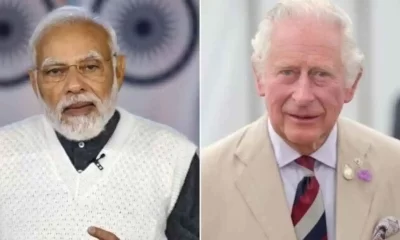Opinion & analysis
A drug repository for poor cancer patients that provides free medicines – Interview with leading oncologist Dr Sameer Kaul
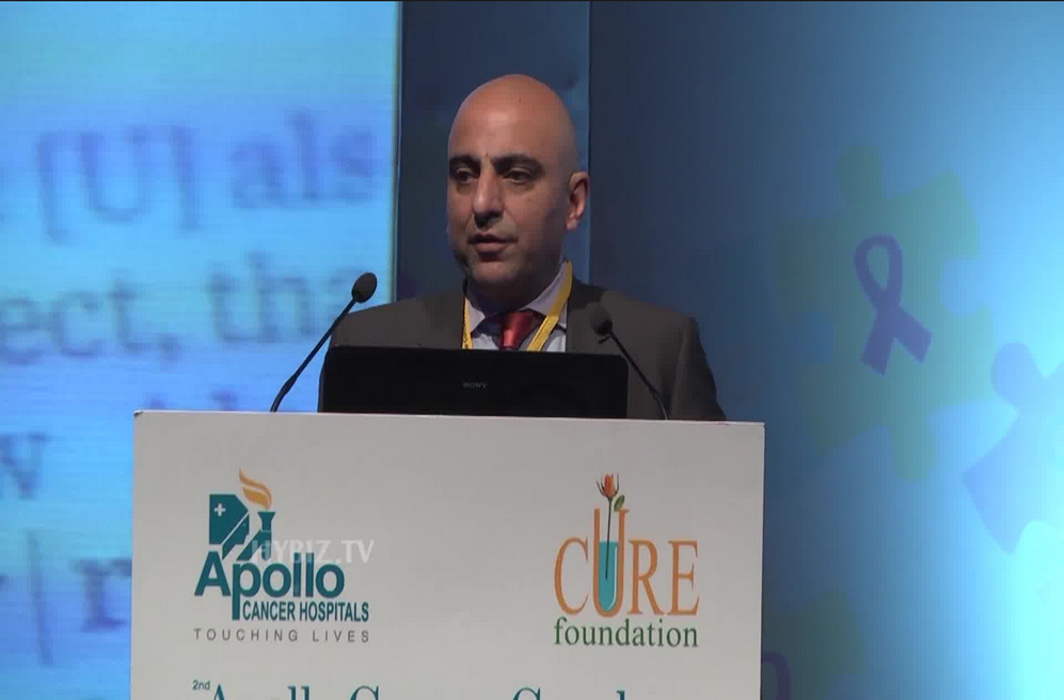
~By Rashme Sehgal
With prices of cancer drugs selling at astronomical rates, Dr Sameer Kaul, a leading oncologist working at the Apollo Hospital in New Delhi, along with a dedicated group of doctors has kick-started a drug repository which provides free medicine and financial assistance for thousands of poor cancer patients.
Q. How does your central drug repository for cancer treatment work?
A. Our central drug repository like the Reserve Bank of India for cancer patients. Most of the corporate sector, bio pharmacies and medical devises give us their product free of charge or at nominal rates which we try and disperse in the quickest time.
I emphasise quickest time because people with cancer have little time, it is an evolving disease and one stage progresses into another. The help that cancer patients get from state and central government through their various schemes requires extensive paper work and that takes up a lot of time.
Q. You said cancer is an evolving disease?
A. Patients do not have much time. Cancer in Stage 1 can easily become Stage 2 and by the time the money from the government schemes comes through, the patient’s outlook changes completely. Not so much from Stage 1 to stage 2 but much more from stage 3 to 4. The largest number of patients come in these higher stages which is why it is important to take decisions in the quickest time. Our decision to help a patient is based on the credibility of the doctor recommending the case because we ourselves comprise a team of cancer specialists and can identify the criticality of the need. If there is a patient anywhere in the country whose doctor recommends a patient is in dire states and needs financial help or drugs, then depending on who is making the recommendation and what his credibility is, we take just five minutes to decide on a case. We have kept formality to the minimum.
Q. Why has cancer become such an expensive drug to treat?
A. Today cancer medication can cost anywhere from Rs 5000 a month to Rs 5 lakh a month. The cost of the new cancer drugs is very high even for the developed world where these drugs are being developed. We are also in the business of providing free training for nurses, technicians and general practitioners who are the first people cancer patients report to. We show them what early cancers look like. The idea is that they can pick them up early and refer them to the right place to cut short treatment time.
Q. Aren’t doctors and nurses already aware of what cancers look like ?
A. Not always. Lung cancer can be treated for months on end as TB while lumps in the breast can be thought to be benign. When they are not picked up in time, this impacts the result of the treatment. We also hold technical cancer meets for cancer doctors and patients in order to bring them up to date with changing methods of treatment and also free cancer checkups for those living below the poverty line.
Q. We are often told a cancer epidemic is sweeping the country ?
A. That’s not true. The number of cancer cases has increased throughout the world. This is true for the higher income group , the middle income group and the lower middle income group countries. India belongs to the lower income group.
Populations throughout the world are aging. Population levels have also increased as has life expectancy. Cancers of old age have added to the existing list of cancers. Cancers of the aging, prostrate, oesophagus, colon, gastroenteritis and lung cancers are on the rise. Our recording procedures have also improved. We have a name to the disease for which there was no name sixty to seventy years ago. Countries today including India maintain cancer registries to study demographics and the incidents and prevalence of cancer across India.
Registries also help in the allocation of resources and to plan a line of attack. India needs to improve its recording skills. Cancer is the highest health spend in every country. All countries are not grappling with the issue of affordability. There are not enough monies and even insurance agencies do not have enough money required to adequately tackle this disease. Even richer countries are facing this problem.
In India there is a double whammy. Not only do we not have enough money but our technical infrastructure is yet adequate enough. The distribution of cancer hospitals is not homogeneous and there is a lot of variability in the quality of care. We have to develop standardised cancer guidelines to treat cancer appropriately because we do not stick to schedules and protocols thereby leading to an increase in costs.
I must emphasise that for innovator companies, it can take over $ 5. 2 billion for a pharma company to get a new drug in the market. Our own Indian companies are not up to the mark. We do only copycat research. When a company patent expires, we duplicate and copy the drug. We are not innovators. We do not have money or the temperament. Research is not a prime career option because the reimbursements for research are meagre.
Q. What is the way out?
A. Better models of delivering health care required. We need to work out how much money is spent and what is its outcome. Treatment has to become value for money. We also need to decide whether our thrust should be through centres of excellence or treatment should be taken into the community. The Nordic countries like Norway and Sweden are excellent examples of cancer innovation. Should we have centres of excellence where cancer treatment is developed in one big hospital or spread it out in communities?
Q. What is your view?
A. We need to have both. We must also decide the type of reimbursement for cancer patients meaning should the company take money for the drug when it succeeds in curing a patient or refund money if the drug does not work.
Q. I have never known a drug company reimbursing money because their drugs have failed to cure? You mentioned that a single shot of a newer drug cost $350 to $ 500. How many patients in India can afford to buy these drugs?
A. We need to innovate, to negotiate, to increase access to these drugs in order to understand just how much is required to become an essential part of the treatment plan for a patient. The newer treatments pertain to Robotic Surgery, targeted and personalized enzymes, proteins and immunological agents. These are mostly ill afforded by Middle and Low income populations. Since there are no alternatives to these sophisticated treatments and we generally make do with traditional chemotherapy and Radiation treatments which brings with it a fair share of toxicity.
Q. Just how much of new research is taking place in the field of cancer?
A. We are presently using genomics to treat our patients. By doing so, we use a diagnostic approach to understand the genetic message in a tumour, its DNA structuring and which drug will work for its treatment. Almost like getting a culture test for a urine infection. A urine test tells us what line of treatment to pursue and what is the best antibiotic to give. That is what is happening in cancer. Personalised medicine or disruptive medicine will yield affordability because then you don’t waste drugs .
Q. I still maintain that few Indians can afford drugs at these rates?
A. This is better than doing a hit and miss. This diagnostic approach has succeeded in mice and this approach should work with humans also. We are able to find out the high likelihood of cancer developing and can alter it.
Q. Why would we want to alter this?
A. The genetic message is very important. Testing of women for BRCA 1 and BRCA 2 will help determine her chance of getting breast cancer. You have control over your future. Angelina Jolie got both her breasts removed after her BRCA 1 and BRCA 2 tested positive.
Q. Is cancer also a genetic disease?
A. Most of it is genetic, it is gene linked and 15 per cent of it is hereditary. While 15 percent of all cancers are inherited through familial lineage, 85 percent are termed sporadic. They arise due to mutation in our genes and, internal hormonal disequilibrium.
Q. What about environment linked cancers ?
A. Cancer is a product of both the internal and external environment. Pollution, tobacco, ionising radiation and other known carcinogenics, aniline dyes, constant chemical irritation and HPV/ Epstein bar virus are also caused by our external environment.
Q. As the earth gets more polluted, there are more chances of us developing cancer?
A. Yes, external environment is responsible as also diet and lifestyle. We need to teach children to eat wholesome foods and greens from their childhood.
Q. To go back to the earlier question, just how much cancer health care is available to the poor?
A. Speaking for ourselves, we are only working with the lower income groups. In the private sector, we are probably the only group in the private sector today that gives cancer patients money for eating, staying in a dharmsala, travelling, paying doctors fees and for getting their tests done.
Q. How much do you actually give?
A. The money can run from Rs 5000 a month to lakhs of rupees per month. The medicine costs for leukaemia patients is running into over Rs 60,000 per month.
Q. How do you raise the money?
A. We do not take a single paisa from the government. The money is raised from grateful patients, relatives, philanthropists, social media and through crowd funding.
Q. Families today are running into huge debts while treating cancer patients?
A. Cancer is the commonest sickness ending in medical bankruptcy. That is why the concept of affordable cancer care and outcome based cancer must be developed.
Q. My final question is that despite all the research in this field, we still do not know how we get cancer?
A. It is just an uncontrolled growth of the body cells which disseminate throughout the body. There is an underlying genetic message which is acted upon by different agents called carcinogenics.
Opinion & analysis
Never say never again: Nitish Kumar’s expertise at hoodwinking allies shines through!
Nitish Kumar does it again!
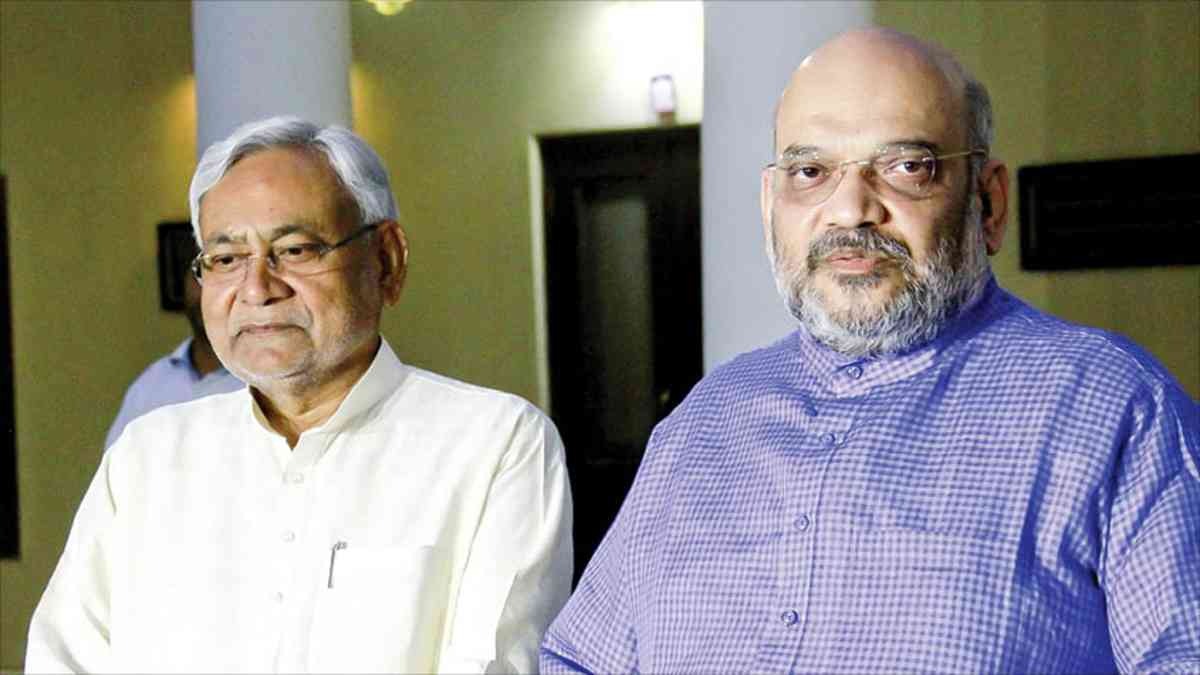
By Vikram Kilpady
Possibly the first state government to fall after the ascendance of the Modi-fied BJP without that party’s hand in the machinations has just shaken up the political landscape in Bihar, and the country. Nitish Kumar has pulled the rug from under the feet of the party. But since history has seen several turns first as a tragedy then as a farce, as noted by Hegel and Marx, Nitish Kumar possibly has the last laugh since he’s done the tragedy-farce duo twice. First, with the Rashtriya Janata Dal and, now, with the BJP, which among its many leaders has one man who gets called Chanakya way too often.
Once the party with a difference, the BJP has mastered the game of overturning elected governments; Madhya Pradesh where a maharajah switched to his aunt’s party, twice in Goa where elected Congress MLAs found faith in a new boss, Maharashtra where the cadre-strong Shiv Sena was ripped apart by a minister’s ambition, Karnataka where Operation Lotus blossomed first and spread its petals across the country.
Soon after the Modi magic of 2014, the dispirited opposition found new hope in the victory of Nitish Kumar and Lalu Yadav in the Bihar elections of 2015. But that was short-lived, Nitish found himself stifled by the ambition of Tejashwi Yadav and changed his mind, walking back to the BJP, which was eager to support him.
The 2020 election had the writing on the wall written in a more legible hand. The BJP won 74 seats, just one short of the party with the most seats, the RJD, which won 75. Nitish Kumar came third with 43 seats. The BJP was gaining at the cost of the Janata Dal United, which beat down Chirag Paswan’s rhetoric but couldn’t manage enough MLAs. The national party cannibalised its partner several times over throughout their association. The symbiosis of the initial years under Vajpayee was becoming a brain and brawn drain for the JDU. The election results were not free from controversy though, with the RJD alleging ballot boxes were changed in the middle of the night. The elections may have been won by the BJP and Nitish Kumar, helped by the image of Prime Minister Narendra Modi, but politics is not just platitudes, it also involves dirty work.
The use of RCP Singh by the BJP pointed at the potential of a Shiv Sena redux in the JDU, prompting the old fox to return to familiar Janata buddies, though once stabbed and all. But what is politics without the choosing of strange bedfellows, even if it borders on promiscuity and worse.
Read Also: Bihar BJP accuses Nitish Kumar of betraying Bihar people
The other angle to see the Bihar turn is from the lens of national politics. The idea of a country rid of the primary opposition party, aka becoming Congressmukt Bharat, has gained popular acceptance among the many for whom democracy is just voting in a new government. The turning of the Congress from its trademark white kurta to black attire was seen as a gimmick by the mainstream media. Far from a gimmick, the party was using what it encountered in Tamil Nadu where it rides on an ally’s stronger connect. The DMK’s parent, the Dravidar Kazhagam and its offshoots, still wears black shirts in protest against the idea of a homogenous India smearing over the vast differences between the country’s many constituents. With Hindutva becoming that all-unifying glue being applied by the BJP across the length and breadth of India, the Congress’s choice of black shows a new savvy.
Covid may have eclipsed the economy but many other slights and the worsening employment situation have India on uneven terrain. The Centre has to hold, but with accountability of successive state governments now enveloped buried in the image of the much-sought-after Strongman, an image that papered over the stark inadequacies of his administration, and won him and his party elections handsomely. The country was wearily dragging its battered economic self for another election some two years away. Nitish Kumar’s somersault has brought realpolitik back into the mix but investing all hope in serial side-switchers can be harmful for one’s emotions and well-being.
To be a rock for the Opposition, Nitish Kumar should not roll. But can old dogs learn new tricks?
Nitish Kumar stakes claim to form new Mahagathbandhan government in Bihar
Bihar Chief Minister Nitish Kumar resigns
India News
Yearender 2021: When hate uncovered its face
Instead of protecting victims of such incidents, the perpetrators not only enjoy immunity from the law, but also the administration in BJP-ruled states punishes victims. The use of false cases and arrests under draconian laws like UAPA are the preferred weapons.
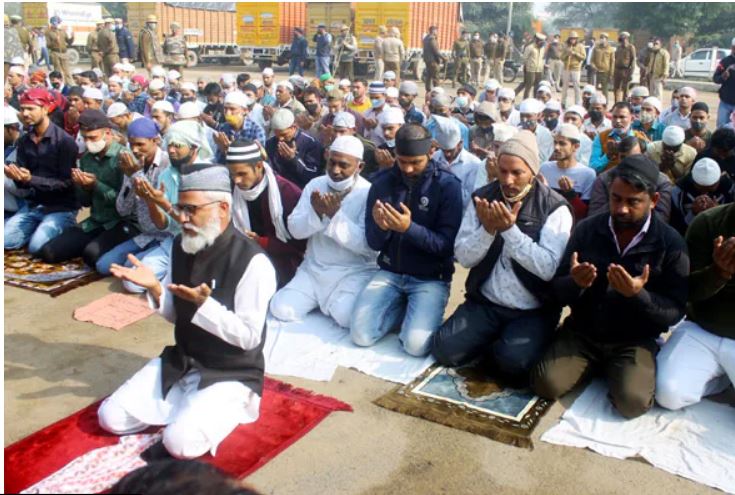
By Mohammad Javed Rasheedi
2021 is about to melt into 2022 in less than 48 hours. Majoritarian politics continued to hold its way over the country this year. But this year, it was not just Muslims but also Christians who felt the heat of Hindutva attacks across India as right-wing Hindu groups waged a culture war against them. Several churches have been attacked and statues of Jesus broken, the latest being in Ambala’s Army Cantonment, the scene of many a Rudyard Kipling work.
December saw targeted hate speeches against minorities. The one at Haridwar saw many participants vow to even take up weapons to redeem their faith by killing non-Hindus. The Hindu right-wing has waged war against Christians accusing them of religious conversion through their missionary work and Muslims for Love Jihad, an Islamophobic trope singling out Muslim men for falling in love with Hindu women and then converting them into Islam. However, such allegations targeting minorities have become a cornerstone of Hindu right-wing nationalism.
The Association for the Protection of Civil Rights, United Against Hate, and United Christian Forum jointly released a fact-finding report highlighting the series of attacks on churches and hate speech against Christians across India. According to the report, India has recorded more than 300 attacks on Christians and worship places within the first nine months of 2021.
Of the 305 incidents, 66 took place in Uttar Pradesh, 47 in Chhattisgarh and at least 32 in Karnataka.
While another report of the United Christian Forum had claimed that India reported more than 400 incidents of violence against Christians across the country. Among those, the incident involved storming churches, burning Christian literature, attacking schools and assaulting worshipers.
However, it is shocking that only 30 FIRs have been registered so far in these cases. On many occasions, restrictions were imposed on people to carry out religious ceremonies.
First on the list of attacks is the one on October 3, where a mob of 250-300 persons barged into a Roorkee church in Uttarakhand and attacked people, destroyed CCTV cameras, and vandalized church premises. Many reports said there were only 12 inside the church for prayers when the attack took place.
Apart from this, the attacks on churches were also reported from BJP-ruled states Haryana, Uttar Pradesh, Madhya Pradesh and Karnataka. And these attacks have taken place over allegations of religious conversion. Christians prayers meetings have also been stopped by the same Hindu mob who had stopped Jumma namaz in the so-called Millennium City, Gurugram. The city also saw an attack on a school’s Christmas celebration.
In the last week of 2021, the bank accounts of Mother Teresa’s Missionaries of Charity were frozen over FCRA claims, West Bengal Chief Minister Mamata Banerjee tweeted about the heartlessness behind the move affecting the charity of the outfit.
Some 22,000 patients and employees have been left without food and medicines, the West Bengal Chief Minister had tweeted.
The Missionaries of Charity was founded in 1950 by the late Mother Teresa, a Catholic nun from Macedonia, who moved to India and took care of the destitute and the poor and won the Nobel Peace Prize in 1979 for her work.
Hate speeches have been curtailed by some norms, keeping them among friends and family. The last week of 2021 saw more public hate speeches in the country. The controversial Dharam Sansad organized in Haridwar, other such events in Delhi and Chattisgarh saw where priests and leaders taking an oath to kill Muslims, and even urged Hindus to arm themselves against the Muslims to make India a Hindu Rashtra.
With next year’s assembly elections in Uttar Pradesh, Uttarakhand, Punjab, Goa and Manipur due shortly, the increase in such hate is an attempt at reviving polarisation.
The violence in Tripura, where VHP hoodlums attacked Muslims and vandalized some of their mosques and Friday prayers disruptions at designated places at Gurugram were also the prime example of rising hate against Muslims.
Anti-Hindu violence in parts of Bangladesh triggered violence in Tripura. The communal riots erupted on October 26 after a rally organized by the Vishwa Hindu Parishad to protest against the attacks on Hindus in Bangladesh turned violent.
The VHP and the Hindu Jagran Manch organized rallies in different parts of the state to protest against the violence in Bangladesh. Later, the VHP and other right-wing groups denied any role in the violence.
The anti-Hindu violence in Bangladesh, which erupted during the Durga Puja festival, was triggered by rumours that the Quran had been insulted in one of the pavilions set up for the celebrations. Seven people were killed, several temples desecrated, and hundreds of houses and business establishments of the Hindu minority were torched.
However, many Muslim groups alleged political conspiracy claiming that the minorities were being targeted in the north eastern state. There were many arrests and some journalists covering the riots in Tripura were also detained. Those who tweeted in favour of Tripura’s Muslims also found themselves being served notices by the state police.
The Uttar Pradesh government had faced severe criticism from the opposition over the killings of Kasganj youth Altaaf in mysterious circumstance. He had been arrested on suspicion of eloping with a Hindu woman. Again, the smoldering love jihad theory. The law and order in Uttar Pradesh, which had earlier won so much praise from PM Modi and other BJP leaders, has been roundly criticized by opposition parties in Uttar Pradesh.
The family of the deceased had alleged that he was tortured by police in the lockup, which led to his death. Police claimed the accused killed himself using the drawstring of his jacket’s hood when he went to the lockup washroom.
Apart from mob lynching, Muslim street vendors in Ahmedabad and some parts of Madhya Pradesh and other parts of the country have been threatened and disallowed from pursuing their livelihood. In Ahmedabad, the Hujarat High Court stepped in to tell off the civic authority to desist from such measures. In Assam, poor peasant families cultivating land for decades were brutally evicted only because they belonged to the Muslim minority. The point-blank shooting of Moinal Haque by police personnel caught on video and the subsequent death dance by a photographer with the remains indeed were a mirror for the crumbling facade of secular India, now overtaken by an aggressive mindless herd mentality spewing hate and violence.
Read Also: Masik Shivratri 2022: Know date, shubh muhurat, puja vidhi, significance
An empty desolate car park outside Sector 37 police station in Gurugram where Muslims had performed Friday prayers for more than a decade turned into a battleground of faith. Hindu right-wing groups staged protests, sloganeered during Friday prayers and held a Govardhan puja at the namaz site just to deny namaz here.
Instead of protecting victims of such incidents, the perpetrators not only enjoy immunity from the law, but also the administration in BJP-ruled states punishes victims. The use of false cases and arrests under draconian laws like UAPA are the preferred weapons.
Haryana news
Dushyant Chautala stood up for farmer’s cause; opposition failed
The Indian farmer constitutes 40 per cent of the country and an even higher percentage of its poor and as the available data points out, is under immense stress.
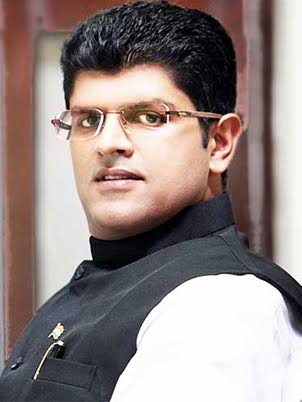
By Prateek Som
The Indian farmer constitutes 40 per cent of the country and an even higher percentage of its poor and as the available data points out, is under immense stress. The modernization of the central farm laws is nothing but an adaptation of provisions which already exist in many states, including Punjab and Haryana. How come the three acts become anti-farmer in some states and why not in many others is something the activists themselves cannot explain.
Big states like Uttar Pradesh, Bihar, Maharashtra, West Bengal, Rajasthan are not even a part of the farmers’ agitation and there is no protest against the central or state government in these states, despite the fact that BJP is not in power in some of these states. More importantly, some agriculturists and several economists have been campaigning for abolishing MSP based procurement as it is unfairly tilted towards a few states like Punjab.
The Central government has neither abolished the MSP nor does it say anything against it in the laws. If, despite this, the impression is being spread that MSP is to be abolished, this is clearly mischievous. The activists are not only spreading the misinformation about the MSP abolition but they are asking for an unreasonable clause in the law for unlimited MSP based procurement which was never a part of the previous laws related to agriculture and APMC acts.
The Indian farm bills are in line with international precedence wherein a number of developing economies have been making changes to their agriculture policies since the 1990s to encourage private sector involvement which would provide a major fillip to the sector. The International Monetary Fund has also backed the recent farm acts as being an important step in the right direction. Despite all the supportive arguments in the favour of the laws, India has seen unprecedented protest in and around the capital as a result of political vendetta.
Politics of Yogendra Yadav and Gurnam Chaduni and its irrelevance to the farmer’s cause
Raising the farmer’s issues should be an act done collectively but the state farmer activists are trying to establish a monopoly in the leadership. They are not even active in all the parts of the state, but targeting only those districts with paddy belt of cropping pattern. Most of them are politically motivated.
In an interview given to NDTV, Yogendra Yadav came out as an aspiring candidate for Haryana CM post and he was advertised as the most fit politician for the position. He formulated his own party, ‘Swaraj’, after being expelled from AAP and lost badly in polls. It is a proof that he lacks mass support. A report by Divya Bhaskar states that farmer leader Gurnam Chaduni was accused of teaming up with political parties like Congress, AAP, SAD and some independent leaders and getting into a deal worth Rs 10 crore to topple the Khattar government in Haryana in return of Congress ticket for elections. There are allegations that Chaduni is collecting funds out of the collection drive for protests and hiding the funds from other leaders. He was also blamed for instigating farmers to disrupt the January 26 celebrations at the Red Fort. Haryana CM Khattar held Chaduni responsible for instigating the farmers that led to clashes between farmers and police at Karnal just before the Kisan Mahapanchayat programme. As a result of his politically motivated efforts, Chaduni was suspended by Samyukt Kisan Morcha from meeting politicians across country. In the 2019 assembly elections, Chaduni contested from Ladwa as an Independent candidate, but suffered a heavy defeat, garnering only 1,307 votes and losing his deposit.
Yogendra Yadav and Gurnam Chaduni are mere examples of how election failures like themselves are trying to garner the support of the commoners for their own political resurrection. The claim of being a leader of the farmers is in contravention with the inconsiderable support both Yadav and Chaduni got in the polls. The Shiromani Akali Dal that left the NDA government in the pursuance of state elections and under the disguise of farmer’s demands has made zero impact on the political ground of Punjab. Their biases can not only be seen from their actions but their cause and concern for two states out of 28. The threat posed by leaders like these to the democratic process of passing of a bill can be seen through the factual analysis of what the laws actually say versus the intentional misconceptions spread by such leaders.
Since an unlimited MSP based procurement is not in the law even today, it is not clear how this is even an issue. More importantly, putting this in the law means India will get tied to distortions that MSP based prices cause in perpetuity. The government has made it clear that procurement at MSP will continue and also that the mandis will not stop functioning. Farmers will have the option to sell their produce at other places in addition to the mandis. It is worth noting that only 6% of farmers actually sell their crops at MSP rates, according to the 2015 Shanta Kumar Committee’s report using National Sample Survey data. There are fears that contract farming will lead to land loss of the small and marginal farmers to big corporates. However, adequate protection of land ownership is in place to protect farmer interests. The act explicitly prohibits any sponsor firm from acquiring the land of farmers – whether through purchase, lease or mortgage. The point to note is that contract cultivation is voluntary in nature and farmers cannot be forced into an agreement.
How Dushyant Chautala is taking initiatives for farmers
Dushyant Chautala is the only state leader who has met Central leaders regarding the farmer demands – Prime Minister, Home Minister, Agriculture Minister along with other cabinet ministers Nitin Gadkari and Piyush Goyal. No other leader in India has met them specifically for farmers’ demands. That shows the concern and responsibility on the part of the JJP leader who is a leader of the masses.
In April 2020, Deputy CM Chautala addressed that the state government will procure the crops of the farmers in a better way while saving the state from the corona epidemic. As a result of this, even in the pandemic situation, mandis have been increased to 162 from 67 for the purchase of mustard at MSP. Haryana is the only state across the country which has started procurement of mustard crop in this pandemic. In November 2020, Dushyant assured the farmers that government will buy every grain of the crop. He made procurements for non-MSP crops to get the rate of MSP crops. He also announced formation of women Self-Help Groups in all villages on the lines of successful initiative in Hisar, to increase employment opportunities for women and showcase their talent at international level.
In February 2021, Dushyant made the announcement to buy 6 crops including wheat, mustard, pulses, sunflower, gram at MSP, barley is included for the first time. Haryana is the first state to offer MSP for barley. Every farmer is to be registered on the ‘Meri Fasal Mera Byora’ portal at MSP and payment amount will arrive in the farmer’s account within 48 hours. Along with recent announcements, the schemes like Mukhyamantri Parivar Samman Nidhi Scheme, Haryana Agricultural Machinary Grant Scheme, Pragatishil Kisan Samman Yojana, Pragatishil Kisan Trainer and Kisan Mitra Scheme to promote the inclusive growth of farmers in Haryana.
The main agenda of ongoing agitations
Amidst all the chaos, the agitations by activists like Yogendra Yadav and Gurnam Chaduni are for targeting Deputy CM Dushyant Chautala. It is a matter of record that many times they carried protests outside his residence and their intention and cause are suspicious to the core as they did not target any other leader in power like this.
The agitations in Haryana are mainly against the JJP and specifically targeted towards the leadership of Deputy CM Dushyant Chautala. The attempts of the farmer leaders to make Dushyant Chautala resign from the government are nothing but petty politics to destabilize the state government. If the threat to farmers is real, why the cause of the farmers is not taken up by the farmers from masses than some farmers from selected areas and that too under the leadership of politically motivated specific leaders only who have ties with the parties who are eyeing the upcoming elections?
The high-pitched farmer agitation is not just based on incorrect perceptions of what the new farm laws will result in – the abolition of APMC mandis and MSP-based procurement – they are also not about protecting the farmer in the long run. The agitation is purely an attempt to corner the stable functioning state government, to boost the sagging political fortunes of the activist leaders by deliberately misleading farmers, to run a personal vendetta against a young and dynamic leadership of Dushyant Chautala who is making efforts for the farmers and to give chance to Congress to come in power. That is why, before the activists decided to fuel the agitation, they focused on batting for spreading misinformation, have nothing to say about non-MSP crops/livestock in the state and have no future agenda for the inclusive growth and development of farmers. And to make the matters worse, they are trying to provoke the masses against the people in power for their vested political interests.
The author is an Advocate in Supreme Court of India and National Spokesperson of Jannayak Janta Party
-
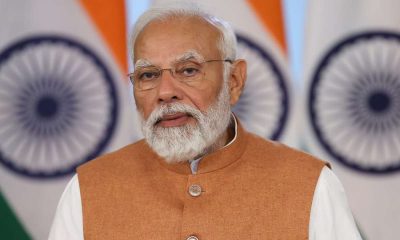
 2024 Lok Sabha Elections14 hours ago
2024 Lok Sabha Elections14 hours agoPM Modi calls for high voter turnout in second phase of Lok Sabha elections 2024, says your vote is your voice
-
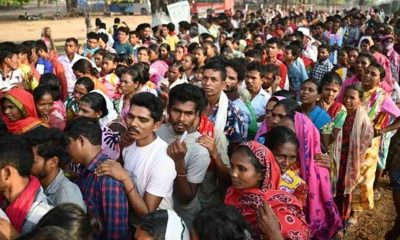
 2024 Lok Sabha Elections8 hours ago
2024 Lok Sabha Elections8 hours agoLok Sabha election 2024: Nearly 50% voter turnout recorded in second phase till 3 pm
-

 India News13 hours ago
India News13 hours agoSalman Khan house firing case: NIA interrogates arrested shooters Sagar Pal, Vicky Gupta for three hours
-
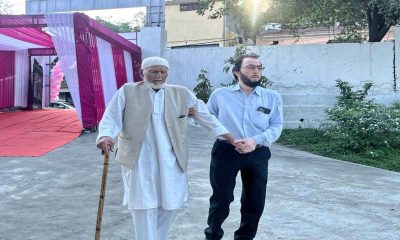
 2024 Lok Sabha Elections11 hours ago
2024 Lok Sabha Elections11 hours agoLok Sabha elections 2024: 102-year-old man walks to polling booth to cast his vote in Jammu
-

 2024 Lok Sabha Elections7 hours ago
2024 Lok Sabha Elections7 hours agoElection Commission books BJP MP Tejasvi Surya for seeking votes in the name of religion





